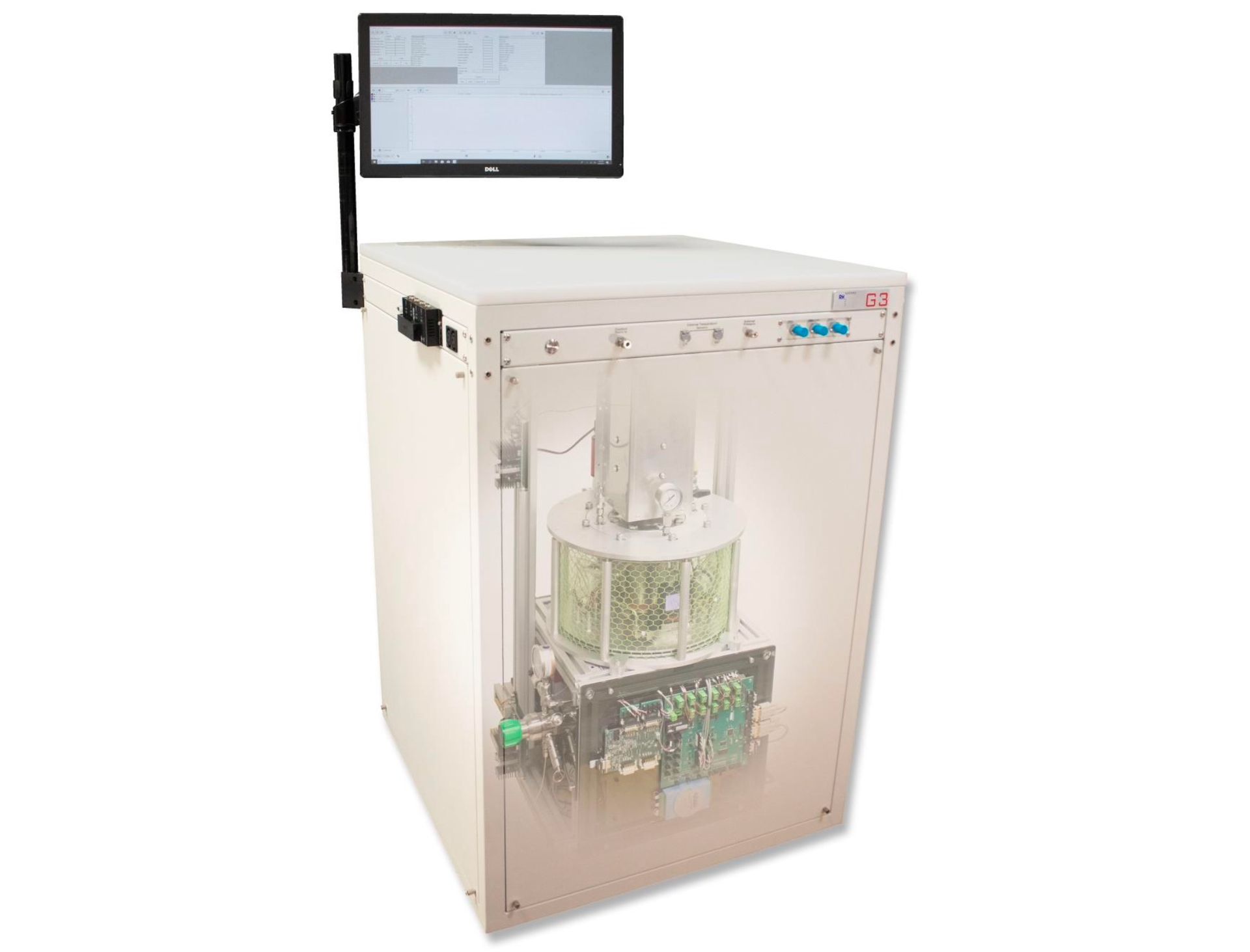Multiple flow controlled outputs
The G3 offers up to 3 independent flow controlled outputs. Each output can flow up to 5 liters/min, with a total combined flow up to 10 liters/min.
Vacuum prevents Water Vapor Permeation
Water vapor permeates many things, especially elastomers and other sealing materials typically found within valves, regulators, and other gas path components. In the G3, permeation susceptible valves and components are housed within the vacuum chamber. As the vacuum intensifies due to removal of gas molecules from within the chamber, water vapor within the vacuum chamber is significantly reduced as well. This removal of water vapor from the exterior surfaces of normally susceptible components thereby prevents water vapor from permeating into these components and affecting the internal gas path humidity.
Ultra-low range capability
Based on the highly efficient dual cryo-cooling mechanism, the G3 is capable of generating ultra-low humidity, achieving humidity concentration below 1 ppb (parts per billion = 1x10-9).
Vacuum provides Thermal Insulation
Rather than using standard insulation techniques such as fiberglass, urethane foams, or other thermal barrier materials, the saturator sits at the center of a high-vacuum chamber. Devoid of molecules which could otherwise transfer thermal energy, the vacuum chamber offers excellent thermal insulation. So rather than adding thermal barrier materials, we utilize vacuum to prevent thermal transfer by limiting molecular interaction.




